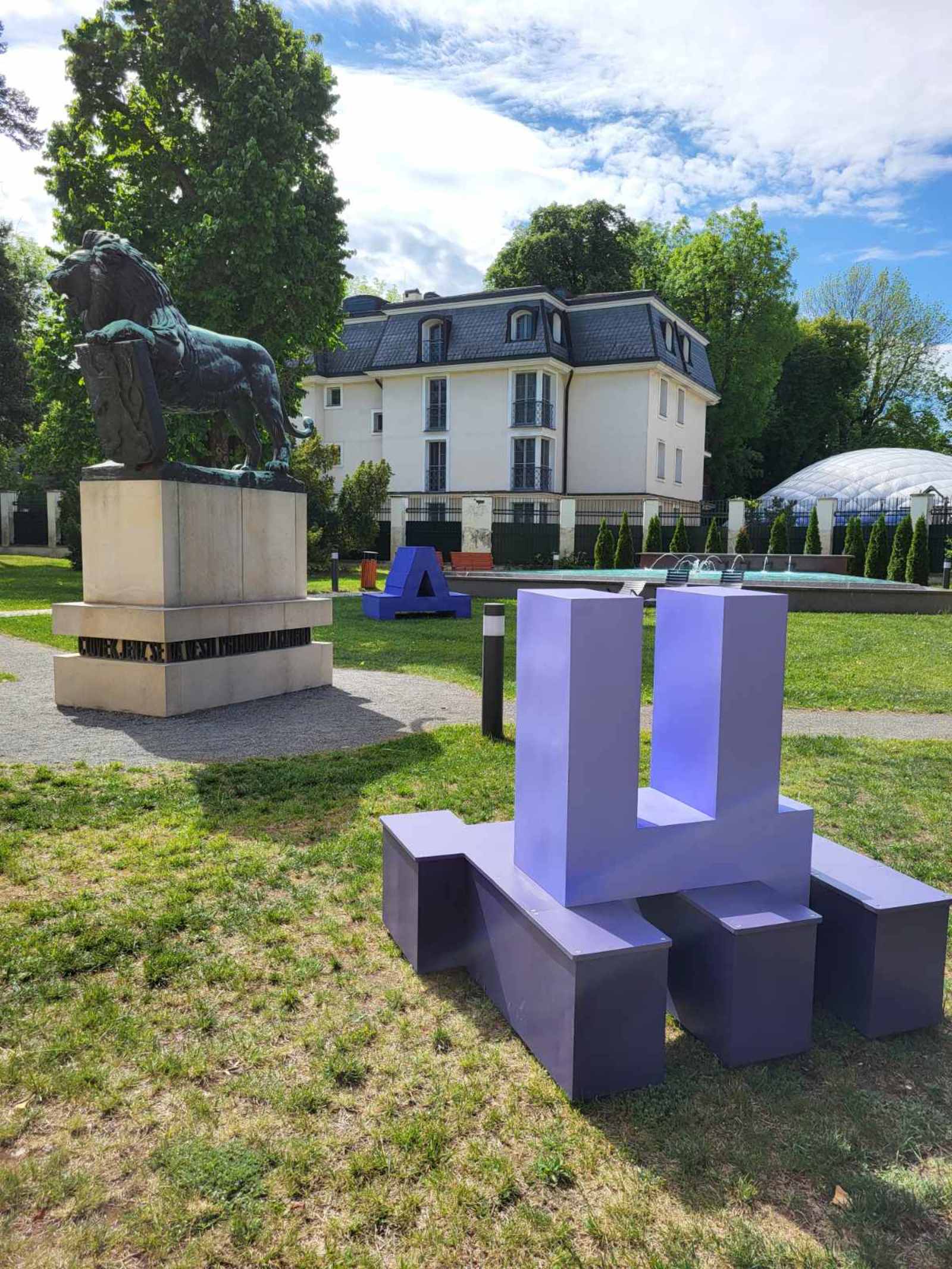The project "Hidden Letters" was Presented in Bratislava
On June 21, 2025, the traveling exhibition-installation "Hidden Letters" was opened in the Slovak capital Bratislava - an artistic project of the "Read Sofia" Foundation, the presentation of which in Slovakia is carried out by the Bulgarian Cultural Institute in Bratislava in partnership with the State Institute for Culture under the Minister of Foreign Affairs.
The installation includes eight colorful benches in the shape of the letters of the Cyrillic alphabet, which have no analogues in other alphabets (B, D, G, Z, I-J, T-Sh, L-U, Y), inspired by the old Glagolitic signs and created by the team: Todora Radeva (curator and producer), Kiril Zlatkov (artist) and Ivan Ivanov (architect).
Each of the letters is associated with a poem by leading contemporary Bulgarian poets - including Georgi Gospodinov, Mirela Ivanova, Silvia Choleva, Maria Kalinova, Ivan Landzhev, Petar Chuhov and others. For the Slovak audience, the texts are available in translation.
The event took place in the Devin district, within the framework of the historical festival dedicated to the work of the Holy Brothers Cyril and Methodius. The festival is organized annually by the Slovak partners Dom Centrope, Bratislava Region and Devin City District, with the active participation of the Bulgarian Cultural Institute in Bratislava - a member of the European Cyril and Methodius Cultural Route.
The opening took place under the patronage of H.E. Mr. Vasil Petkov, Ambassador Extraordinary and Plenipotentiary of the Republic of Bulgaria to Slovakia.
Since the summer of 2019, "The Hidden Letters" have traveled to various cities around the world, such as Paris, Rabat, Berlin, Budapest, Brussels, Edinburgh, Münster, Ghent, Seoul and Velehrad, acting as ambassadors of the Bulgarian alphabet, literature, and culture.
The exhibition "Hidden Letters" will remain in Bratislava until the end of September 2025, becoming a symbolic bridge between the Bulgarian alphabet and European cultural heritage.


